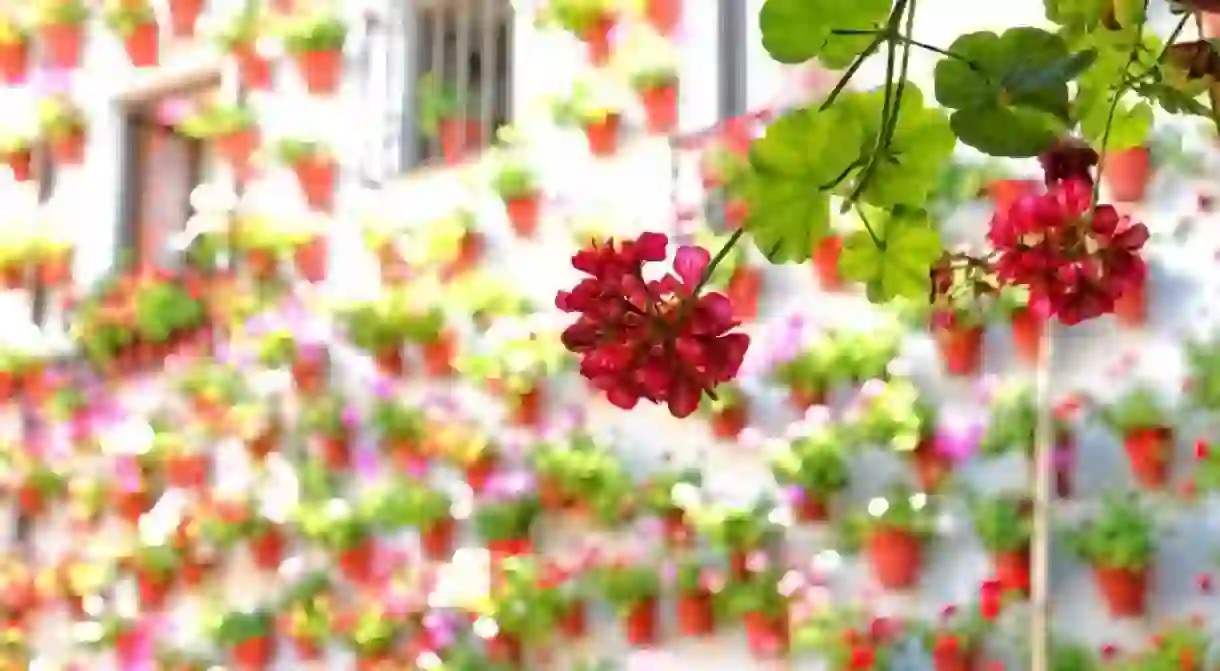The Most Unique Experiences to Have in Córdoba, Spain

Córdoba shares many of its charms with Andalusia’s other great cities, but it also offers much that is not to be found anywhere else in Spain. From wandering around the city’s incomparable Mosque-Cathedral to enjoying one of its local dishes, here are some experiences only to be enjoyed in Còrdoba.
Attend the Cruces de Mayo Festival
The “Crosses of May” festival is celebrated in some other Andalusian cities – most notably Granada – but its most famous incarnation takes place in Córdoba every spring, at the end of April or beginning of May. According to legend, this annual homage to the crucifix on which Jesus was martyred dates back to the 4th century AD, when St Helen’s son Constantine was supposedly aided in battle by a large cross his troops built for him. You don’t need to know the background to appreciate this lovely four-day feria though, during which elaborately decorated crosses are erected in the squares of Córdoba’s old town. Andalusians being the inveterate socialisers they are, makeshift bars and BBQs are also set up in the squares and the locals take to the streets in huge numbers, making this one of the liveliest events in Andalusia.

Be enchanted by the Feria de los Patios
Every May, the courtyards and patios of houses in the old quarter of Córdoba are opened to the public for the city’s Feria de los Patios, in which locals compete for the honour of having the prettiest space (a prize is awarded at the end of the month). This is Córdoba’s most unique cultural offering and something you won’t see in any other Spanish city. Designed, grown and arranged throughout the year, the patios are romantic oases of cool and colour, where the placement of every bright-red pot of geraniums has been carefully thought out. Owners are often on hand and delighted to talk to you about the species of flowers and plants adorning their courtyards’ walls, and in some of the larger spaces live flamenco guitar is performed as you wander. UNESCO recognised the unique charm of the patios feria when it declared the event protected cultural patrimony in 2012.

Enjoy Salmorejo
Everyone’s heard of gazpacho, but less well known is a delicious variation on the famous summer dish that hails from Córdoba. Salmorejo, like its more ubiquitous cousin, is made from fresh tomato juice, olive oil and garlic – but it is thickened with breadcrumbs and usually topped with chunky wedges of cured jamon, croutons and slices of hard-boiled egg. Any tapas bar in Córdoba worth its salt will offer a homemade version of this local classic – often featuring the cook’s individual twist – and it makes for a refreshing, light lunch in the searing heat of a Córdoba summer. The locals are proud of their contribution to Andalusian cuisine and, although you’ll find salmorejo served all over the region, they’ll tell you no one else does it like the Córdobeses.

Visit the Mosque-Cathedral
Building, Cathedral, Church, Mosque
Admire the Guadalquivir River and Surrounding Landscape
Like Seville, Córdoba sits either side of the Guadalquivir river, the murky green waters of which flow down through Andalusia and its capital before emptying out into the Atlantic. The Guadalquivir played a crucial role in enriching the Spanish Empire in the 16th and 17th centuries, as its river port (the only one in Spain) provided privileged access to the newly-discovered Americas. Crossing the river is Cordoba’s famous Roman bridge – a great viewpoint from which to survey the mighty (and utterly unique) Mosque-Cathedral as well as the unusually green and hilly landscape that surrounds the city. This verdant countryside is a pleasant change from the sun-scorched terrain that usually prevails in Andalusia, and can also be glimpsed, rolling away into the distance, between the houses of the old town.

Visit the Alcazar de los Reyes Cristianos
Building, Library, Ruins













